There are so many environmental problems we face today, and they all have to be addressed. But which environmental issues demand our attention now?
We’ll discuss 10 environmental problems and solutions that we can work on now to change our collective future for the better!
10 Environmental Problems and Solutions
Want to know even more? Check out our List of Environmental Issues Examples where we discuss the 30 biggest threats earth faces today for a more in-depth understanding of environmental problems.
Here are the top 10 environmental issues that require immediate attention for the health of our planet and our own survival.
- Climate Change
- Water Pollution
- Air Pollution
- Natural Resource Depletion
- Waste Management
- Urban Sprawl
- Energy Consumption
- Environmental Degradation
- Deforestation
- Recycling Inefficiencies
We’ll discuss these top 10 environmental problems in detail and offer some real-world solutions to each one.
There is no magic bullet solution for the environmental issues we face. The real solution will come when individuals choose to make decisions in favor of the earth’s welfare.
When billions of us combine a lot of small actions they add up to a big impact on the earth.
1. Climate Change
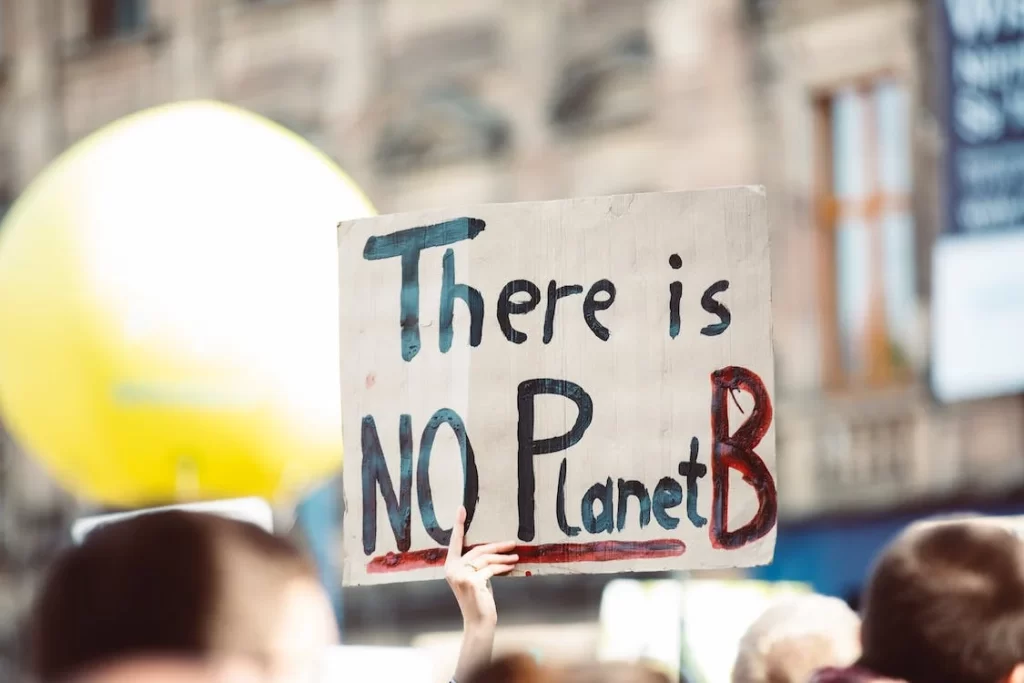
Climate change is a massive topic. Inside this topic are all the subtopics and environmental problems that add up to climate change.
Climate change is the term we use to refer to the changing atmospheric conditions that affect life on earth.
- Global warming
- The greenhouse effect
- Increased saturation of atmospheric carbon dioxide
- Polar ice melt
- Rising seawater levels
- Ozone layer depletion
These things are intertwined and many of them have the same root cause – the main one is the burning of fossil fuels.
However, along with increased carbon dioxide output from fossil fuels, there are mainly CFCs and halons though other substances also destroy ozone molecules.
These substances are found in aerosols, refrigerants (like air conditioners) and other machinery. CFCs are banned, but other ozone-destroying chemicals are still in use.
Depletion of the ozone layer allows more UVB rays to get through the atmosphere which has a warming effect in the atmosphere of the globe. This changes weather patterns and climate expectations everywhere.
Climate Change Solutions
The solutions to climate change involve viewing the world differently than we currently do as a global culture.
We view the world as something to use. We want to get as much as we can while it’s available. This is causing us to use things we don’t need, create waste, and deplete our resources too fast.
Here are a few things we can do to help combat climate change.
- Drive less often and less far. If there is an option to walk, ride a bike, carpool, or use public transportation then use those options first to help decrease your carbon footprint.
- Reuse things instead of throwing them away. Americans seem to view recyclables as the way forward but they have limitations. They help us to reuse existing resources, but an even better choice is to choose reusable items every chance we get.
- Aim for zero waste. Think about it before you buy. Choose to invest your money in things that will last a long time and can be reused or upcycled instead of thrown away. The world is awash in used cheap clothing, single-use plastics, and cheap appliances that are recyclable yet sit in filthy heaps.
- Get involved. Too many people like to talk about climate change and even yell about climate change but don’t do anything to solve it. Work to increase recycling facilities in your area, educate your community about reusables, and plant native species in your town.
- Get Renewable Energy. Renewable energy is a must. Buying an EV car isn’t enough because plugging into a fossil fuel electric grid just perpetuates the problem. Investigate your own chain of energy and opt for the cleanest energy you can afford.
Climate change is a real environmental issue and it’s full of uncertainties. One thing we know is that the decisions we make today can have a major impact on the quality of life on planet earth in the future.
2. Water Pollution

Water pollution includes marine pollution and freshwater pollution. Let’s take a look at both.
Marine pollution is largely caused by nitrogen that washes away from inland soils and drains into the ocean water.
The excess nitrogen creates algae blooms that prevent sunlight and oxygen from penetrating into the ocean water.
This creates a hypoxic environment called a “dead zone” where fish, crustaceans, and sea mammals can’t live. Mobile marine animals leave the area. Immobile marine life dies.
This is the primary cause of our loss of coral reefs around the globe.
Marine pollution also takes the form of trash and recyclables that wash into the ocean and form massive flotillas of rubbish.
Freshwater pollution refers to the pollution of inland water like rivers, lakes, and reservoirs. We rely on these bodies of water for our drinking water, but they are quickly becoming too polluted to drink.
Freshwater pollution also happens due to nitrogen in the water, but it can also be the result of things people do.
- Trash that ends up in the water
- Sewer treatment plant releases (treated and untreated)
- Dirty stormwater runoff
- Pharmaceuticals, detergents, and other things people put in the water system
- Heavy metals like lead and mercury
- Arsenic
- Radon
Some of these things we can’t avoid, but a lot of it is preventable.
Water Pollution Solutions
The effects of pollution could be minimized and possibly healed if we began to consciously make decisions that will protect our watershed instead of polluting it.
- Farmers can use cover crops to fix nitrogen in the soil. It’s an investment, not an overnight fix, but it will make the biggest impact on the health of the oceans and will eventually eliminate dead zones.
- Homeowners can use as little culinary water as possible for watering outdoor plants. Try xeriscaping to save water. Install rain barrels to collect free water to use on outdoor plants and trees.
- Dispose of medicines, motor oil, household chemicals, and paint in the proper facilities so they stay out of the watershed.
- Eat organic as much as you can. This isn’t fail-proof, but most organic farms rely on natural sources of nitrogen rather than synthetic nitrogen to increase crop yields.
- Be happy with imperfect produce. There is a massive global cost to get those perfect fruits and vegetables. They’re treated with pesticides, herbicides, and chemical fertilizers to make them lovely. Go natural to encourage farmers who want to save the planet.
- Enjoy water sports without a motor. You can greatly reduce your own impact on inland water supplies by enjoying muscle-powered water sports that don’t introduce oils, gasoline, and exhaust particulates into the water supply.
Think about how you’re using our precious water resources. Clean water is so easy to get in developed countries that we tend to forget the watershed it comes from.
That watershed needs our protection to continue to provide us with the clean water we need to survive.
3. Air Pollution
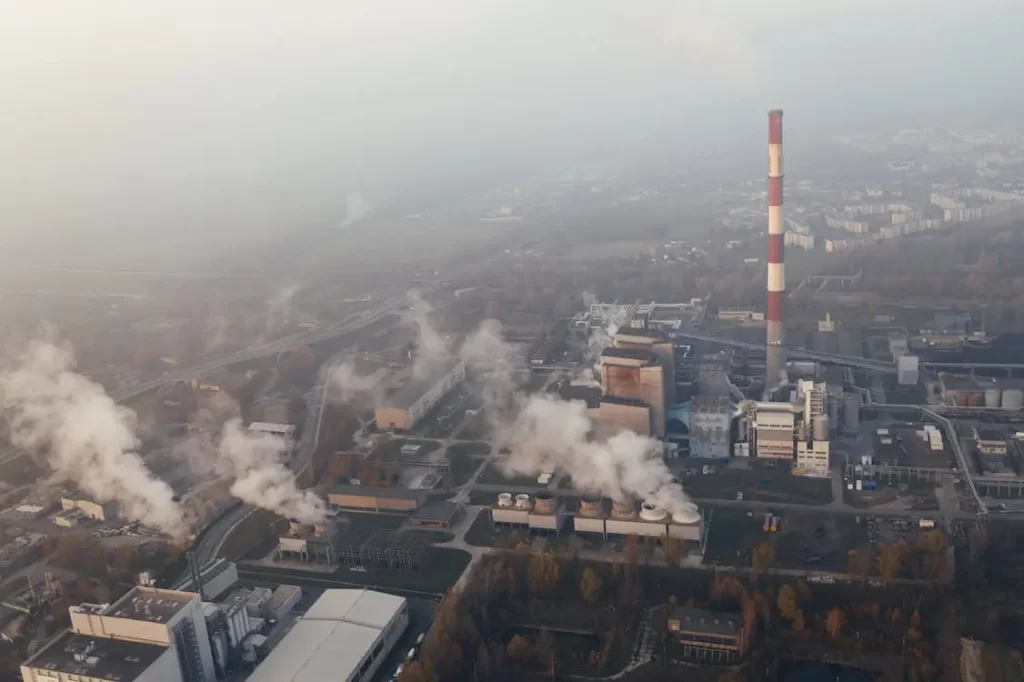
Air pollution is what we call the suspended particulates that become part of the atmospheric gases that we breathe.
We’re not running out of oxygen. The earth has plenty of oxygen. The problem is that the concentration of carbon dioxide is increasing disproportionately and it’s pretty much all our fault.
There is a natural carbon dioxide cycle that we have with all of the plants on the planet. We naturally produce carbon dioxide, and they breathe it in and convert it to oxygen.
In a natural state, this would be in perfect balance.
However, when we burn fossil fuels we pump massive amounts of carbon dioxide into the atmosphere that can’t be offset by the plants in the world.
Furthermore, the carbon dioxide is mixed with a slurry of carcinogens and toxins like methane, formaldehyde, phosphorus, styrene, and more.
Curious to see the full list? The EPA has a list of 188 air pollutants. Nobody benefits from breathing in these compounds.
Air pollution affects everything – us, plants, animals, all water on the planet, and marine fish and mammals.
Air pollution causes and effects have to be clearly understood to really grasp the solutions that we have to implement to clear the air.
Air Pollution Solutions
The biggest solution we can implement is the switch to clean alternative energy sources because fossil fuels are the biggest polluters on the planet.
However, we have to be clear that there isn’t a totally clean energy solution.
- Solar panels are made with coal and require toxic waste disposal when they’re decommissioned.
- Wind turbines have some recyclable parts but the huge fiberglass parts end up in landfills. One of the pros of wind energy is that wind turbines produce zero-cost electricity for about 10 years.
- Nuclear energy pros and cons are hotly debated. It’s a dependable and safe energy source that produces zero carbon emissions. However, uranium mining and disposal cause major environmental hazards.
- One of the advantages of biomass electricity that it creates fewer carbons than fossil fuels. However, biomass production is resulting in deforestation.
Having said all that, we still have to choose these alternative energy sources over straight-up fossil fuel consumption.
Fossil fuels are the dirtiest sources of energy that we have and they contribute the most to the dirty air that we suffer from around the world.
- Limit your time on the road. Vehicle emissions are responsible for most of the dirty air that’s found in cities and communities around the world.
- Turn off the lights and turn down the heat. Electricity usage is directly tied to fossil fuel consumption for powering the electrical grid in many areas.
- Help plant trees. You can plant native tree species in your own town to help clean the air.
- Contribute to rainforest reforestation projects that aim to help strengthen the world’s clean air and biodiversity.
- Choose reusable items and avoid using plastics as much as possible. Manufacturing single-use items contribute a lot to air pollution.
Reducing dependence on fossil fuels will go the farthest in clearing the air around the world.
4. Natural Resource Depletion

The world is full of natural resources. A natural resource is anything that we can use to live or make something from.
Some natural resources examples include:
- Sunshine
- Water
- Soil
- Fossil fuels
- Timber
- Fish
The world is full of natural resources that we use to enable life as we know it. Natural resources feed us, give us electricity, wire our laptops, and keep us hydrated.
The problem is not all natural resources are renewable. Coal, natural gas, uranium, gold, and even salt are natural resources we depend on but once they’re used up we have no more.
This is why we have to focus on stewarding our renewable natural resources.
- Keeping our water clean
- Collecting sunlight for energy
- Ensuring that fisheries are not over-harvested
- Keeping soil as clean as possible – avoiding the use of pesticides, herbicides, and chemical fertilizers
- Managing timber stands wisely so that we aren’t using more trees than we can replenish in several decades.
When we overuse our natural resources we get a short-term payoff but a long-term loss.
For example, establishing reservoirs in the southwest was a good idea 90 years ago. It allowed the development of desert areas.
However, as communities expand across arid areas under the assumption that established water sources will be reliable, the water sources are being used faster than they can naturally replenish.
Natural Resource Depletion Solutions
One of the main natural resources that we’re depleting is fossil fuel. It is not only going away, but it’s also ruining our planet as we use it for fuel and energy.
Switching to cleaner energy sources is a non-negotiable for solving our climate crisis, but we also have to focus on decreasing our need for energy.
Here are some good ways to decrease your own energy demand so we use fewer natural resources to produce electricity.
- Use less air conditioning in the summer. Willingness to be a little warm will go a long way toward decreasing your contribution to air pollution.
- Use less heat in the winter. Wear a sweater and some slippers instead of cranking up the heat.
- Get up and go to bed with the sun. This is harder in the winter, but by adjusting your waking and sleeping schedule to be more in tune with the sun you’ll feel better and use less electricity in the morning and at night.
- Help to plant trees. Again, replenishing the world’s forests help ensure that our air is healthy and that we have timber stands ready to harvest in the future.
- Waste less food. This doesn’t mean cleaning your plate. This means putting less on it in the first place. Food waste begins at the store and it can end there too.
- Eat whole foods. Whole, natural foods don’t require processing. This means that there isn’t a ton of electricity and fossil fuels going into the production of what you eat. Whole foods are better for the environment and better for your body.
- Refill your water bottle. The majority of single-use plastics that are wandering around in the environment are plastic water bottles. Get a sturdy reusable bottle and refill it. You can keep thousands of water bottles out of the waste stream in your lifetime.
By focusing on sustainability we can help to reduce our dependence on non-renewable resources and help to conserve the resources that we have so they last longer.
5. Waste Management
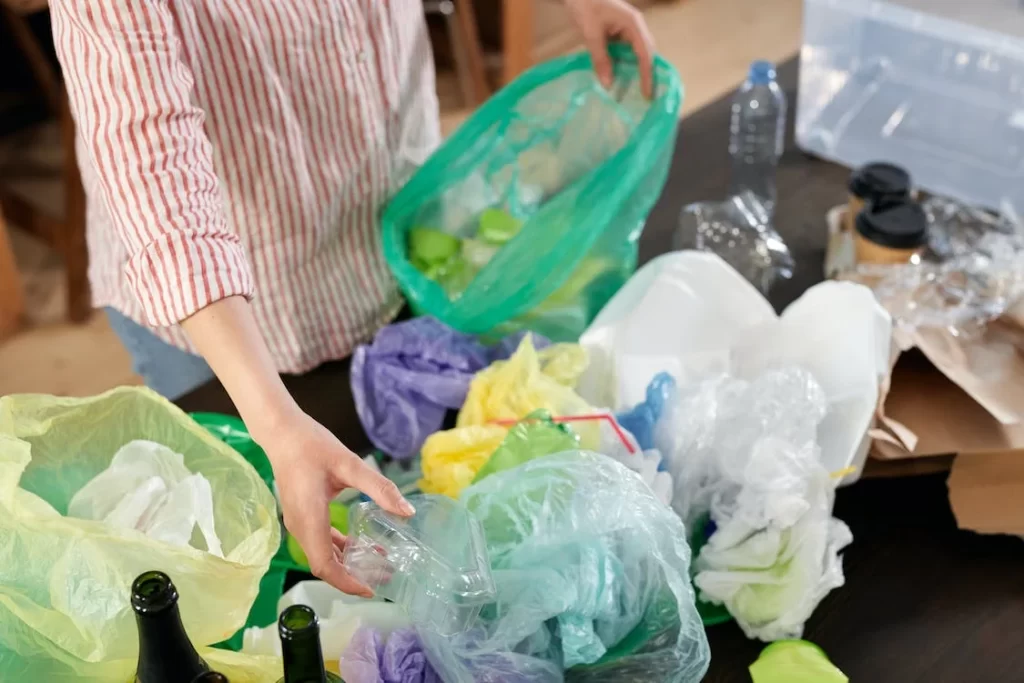
Waste management has come a long way in the last decade, but it has a long way to go in certain areas of the United States.
According to the EPA, the total waste production in the United States averages out to 4.9 pounds per person per day. This includes all sorts of trash that is binned and collected.
- Food waste
- Recyclables (plastic, paper, glass)
- Landfill items that can’t be recycled
- Grass clippings
- Electronics
- Appliances, etc.
50% of the waste stream goes into landfills.
About 32% of the waste collected in the United States gets recycled or composted.
Nearly 12% gets burned as “biomass” to generate electricity.
Around 6% of the waste is food waste that gets treated in other ways. It might be used in animal feed, turned into fertilizer, used in the creation of biochemicals, or other methods of disposal or reuse.
It’s clear that the US has made a concerted effort to deal with waste streams. The problem is that the amount of waste generated per person is growing drastically.
In 1980 each person generated about 3.66 pounds per day. In 2018 that figure had risen to 4.9 pounds per day. This is the trend that we must change.
Worldwide waste production equals about 1.63 pounds per person with the bulk of that waste being generated in highly developed countries.
Though developing countries don’t tend to generate nearly as much waste per person, they don’t have any safe waste disposal infrastructure which leads to the creation of massive open dumps.
All landfills emit tons of greenhouse gases – mostly methane and carbon dioxide. This is another major contributor to global warming.
While recycling efforts in the United States and elsewhere have produced great results, the recycling waste stream produces much more material than can be currently recycled – ending in waste.
Waste Management Solutions
Waste management must be solved worldwide, but the only thing we can affect is our own consumption and waste patterns.
If each of us becomes wiser consumers we can have a dramatic impact on the waste streams and the carbon emissions from them.
- Waste stops at the store. We can’t impact how much production waste there is unless we stop supporting it with our money. Less demand equals less production.
- Choose reusables. The best purchases are things that can be used hundreds of times before they’re broken or used up.
- Choose recyclables. The recycling stream is quickly outpacing available recycling facilities, so this still isn’t the best choice, though it’s better than throwing things in the landfill.
- Don’t buy more food than you can eat. Some areas have food composting programs, but when food is thrown away it also releases greenhouse gases. Don’t fill your garbage can with food. Reduce your waste and compost food waste if you can. That will also help increase soil health.
- Lobby for recycling. There are billions of dollars being spent on United States “infrastructure.” Citizens need to raise awareness of the need for more and bigger recycling centers so the United States can process its own rubbish.
- Lobby for action. Certain landfills are known as “super emitters.” If local authorities and national politicians will focus on cleaning up the emissions from these sites it will make a huge difference.
In the case of waste streams, part of the responsibility lies with municipal governments to handle waste more cleanly.
The other part of the responsibility lies with the citizens. We are the ones generating the waste. We can all do our part to cut down on our own waste as much as possible.
6. Urban Sprawl
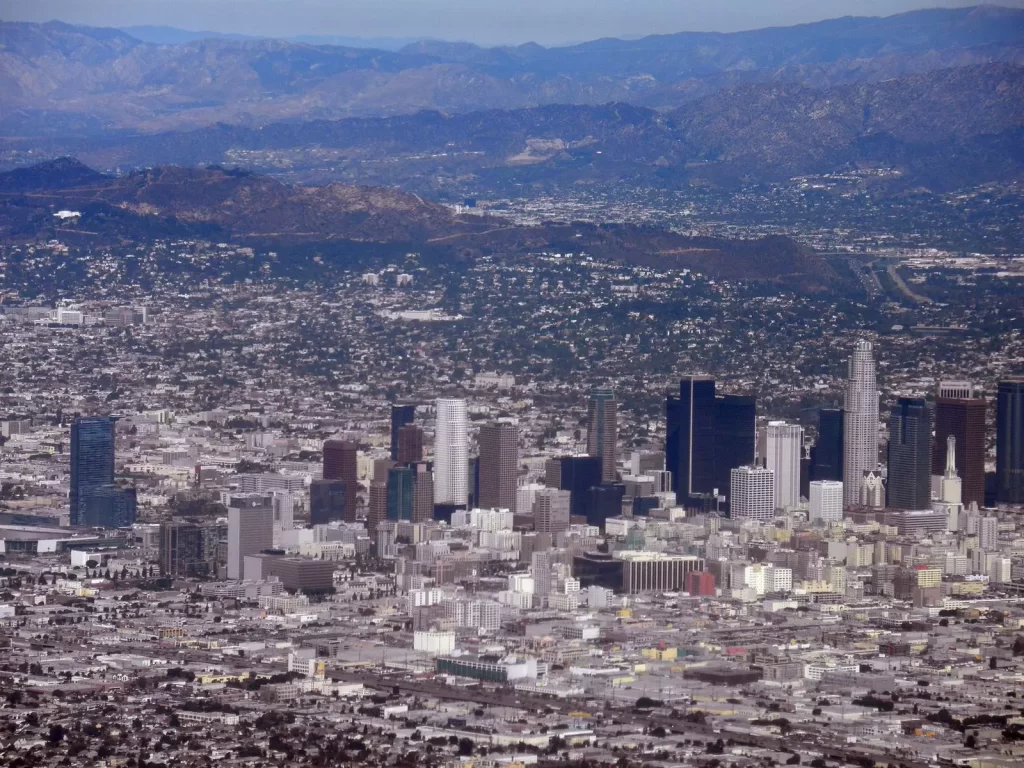
Urban sprawl is the term used to describe the way that cities spread from an urban center into widening suburban neighborhoods. Dwellings go from high-density to low-density, taking up more land.
Urban sprawl is characterized by land use and natural resource consumption.
Undeveloped land that was farmland, ranchland, native plants and soil, or forest is paved over for low-density housing and new strip malls, grocery stores, and restaurant chains.
Here are key takeaways you should know about Urban Sprawl.
- These sprawling areas greatly tax the water supply in the area because the new parks, city strips, lawns, and gardens have to be watered continuously to keep their nice appearance.
- Urban sprawl is a major contributor to the carbon emissions from vehicles. People must commute from sprawling areas into the downtown area for work and school. This increases time on the road. In the worst cases, these vehicles idle while they’re stuck in traffic.
- Urban sprawl creates a need for additional garbage processing resources, greenspace planning, freshwater wells, water treatment plants, waste treatment plants, power plants, substations, and more.
Many of these things aren’t bad, and urban sprawl is often the natural outflow of living in a prosperous area.
It can also be a sign that the municipal government is not keeping the urban areas clean and safe.
Regardless, it is a style of living that uses many more resources than a high-density urban lifestyle.
Some cities including the Dallas/Ft. Worth area and Los Angeles are experiencing increasing urban density as more residents refurbish downtown areas to make them desirable neighborhoods.
Urban Sprawl Solutions
There aren’t any surefire solutions to urban sprawl. The fact is that people move away from urban areas for many reasons – not all of which can be solved.
Here are a few things that local governments can do to encourage people to adopt a high-density housing lifestyle in urban areas.
- Keep residents safe. When people and businesses don’t feel safe in an area they move. Most of the time they choose to move into a suburban or rural area that feels safer. When cities put the safety of residents first they enjoy the prosperity that a thriving urban core brings.
- Focus on key infrastructure. Garbage services, stormwater runoff, sewage treatment, and traffic controls make a big difference in the quality of life in urban areas. When the urban areas feel dirty and congested people move out of the city.
- Encourage community spirit. Cities that find ways to involve citizens in city life enjoy a much higher sense of community pride. This benefits everyone because people who take pride in their community work harder to keep it clean and safe.
- Keep taxes fair. Many people choose to live outside of municipal boundaries because property taxes are much lower in unincorporated areas. Cities that cut fiscal waste can also keep property taxes lower while providing excellent city services.
Over time cities can turn urban life into a desirable living situation for many, diminishing the exodus to outlying areas and helping to curb the rapidity of urban sprawl.
7. Energy Consumption
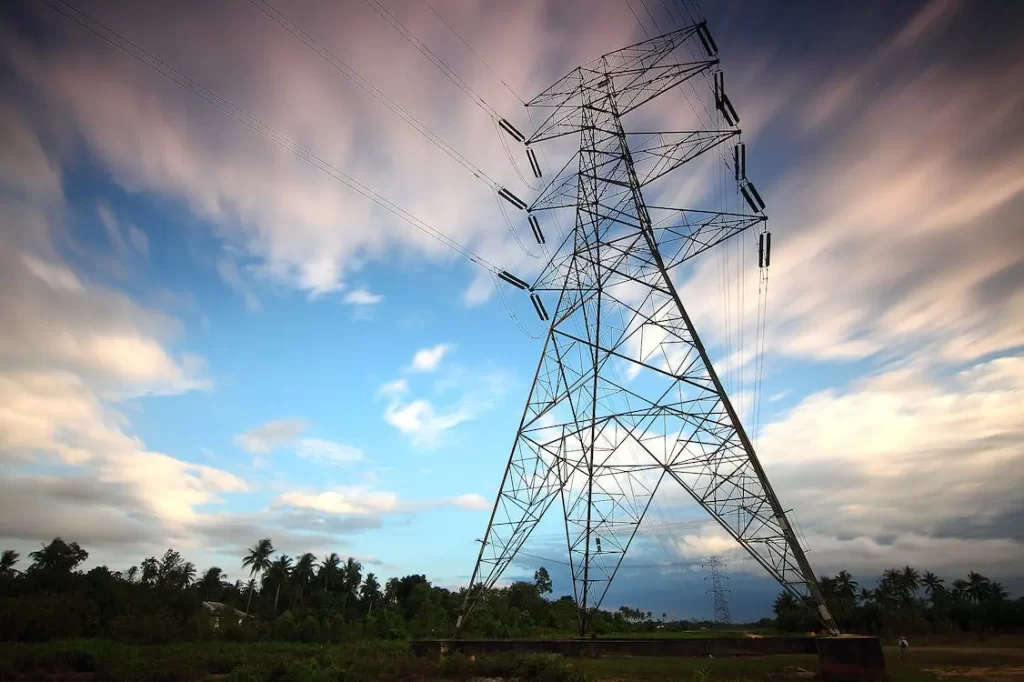
Our overall high energy consumption is the main contributor to climate change because 61% of the electricity generated in the United States is from burning fossil fuels.
So, on top of burning fossil fuels to commute from sprawling communities, we are also burning fossil fuels to charge our EV cars, keep the air conditioners running, and keep the lights on.
There is no denying the negative impact that our high energy consumption has on the planet, but we also rely on it for our highly technological way of life.
For example, let’s take a look at data centers. The world relies on data centers.
They serve all of your cloud storage, social media content, online shopping, virtual worlds, game streaming, on-demand entertainment, and remote workflows.
Right now, data centers alone consume about 2% of all the energy generated in the United States, and that number is growing as data centers pop up everywhere to handle cloud storage needs.
We can’t just stop feeding data centers because we rely on them for work, data storage, and socialization. Younger generations are more dependent on data center capacity and speed than ever before.
That’s just one example of an energy consumer that we can’t just shut down to save the planet. So we have to look at home to decrease energy consumption.
Energy Consumption Solutions
As with most solutions to our global environmental crisis, the answer begins at home.
- Shut off the lights and opt for sunshine. Even small amounts of wattage saved add up to big savings for the planet.
- Keep appliances clean. Did you know that vacuuming your refrigerator condenser will help it to run less often and cool more efficiently? Keep the dryer clean too so it can dry clothing faster and use less energy.
- Accept a little discomfort. Instead of running the heat and air conditioning to keep yourself at the ideal temperature, let it fluctuate up and down to save energy.
- Reduce energy use during peak hours. 7am to 10pm are peak energy hours for most of the country during most of the year. It’s hard to cut down on energy usage during waking hours, but if you can you’ll save a lot of energy and cut down on your bill too.
- Invest in solar panels. Even a couple of solar panels can really help offset your energy usage. Many utility companies around the United States are taking advantage of government incentives and may be able to install your solar system for free!
- Buy into renewable energy. Many energy companies offer programs where subscribers can buy into renewable energy projects. The electricity from renewables costs a bit more, but by buying in you allow your energy provider to buy into renewable and burn fewer fossil fuels.
There are dozens of ways we can all think of to save a little energy here and there. From riding a bike to eating fresh foods we can help decrease the amount of energy it takes to power our lives.
8. Environmental Degradation
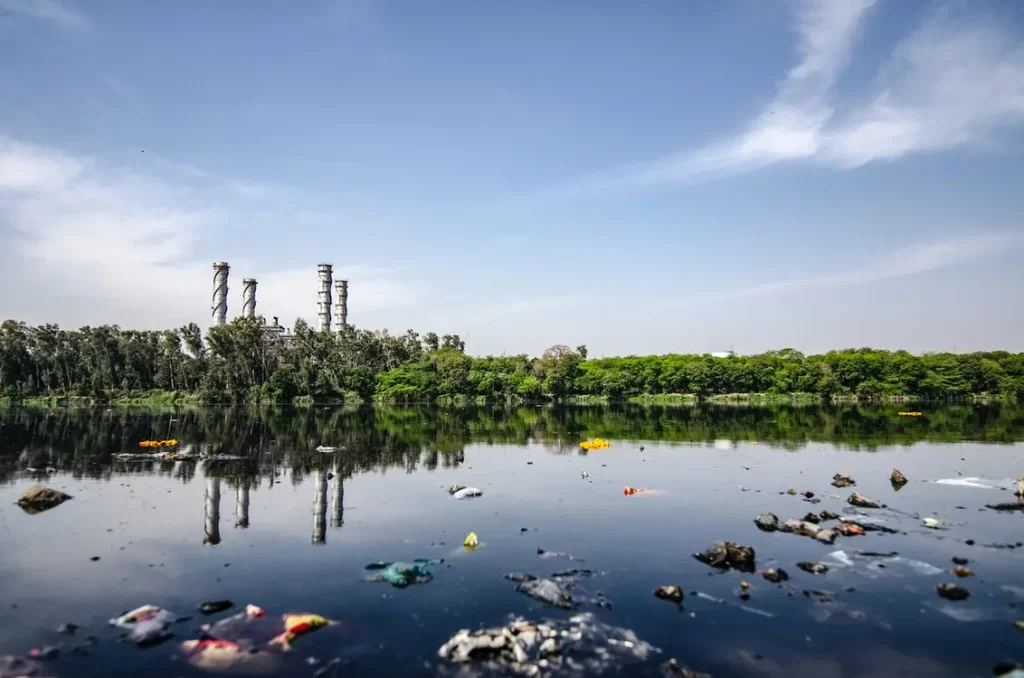
Environmental degradation occurs when human activities change the environment for the worse.
Environmental Degradation Definition
Environmental degradation is the destruction or deterioration of the quality of natural resources and habitats including soil, water, air, and wildlife.
Degradation primarily happens through pollution, over-harvesting, and erosion.
Here are some examples of environmental degradation.
- Deforestation
- Strip mining
- Urban sprawl
- Overfishing
- Marine pollution
- Air pollution
Environmental degradation is inevitable because we have to use the land for food production, energy production, and dwellings, but we can do a lot to help preserve the quality of the land.
Environmental Degradation Solutions
There are a number of thing we can do to help reduce the amount of environmental degradation that happens as a result of our own needs and wants.
- Replant native trees and plants. Much environmental degradation occurs because native plants are stripped away for development. Replanting exposed soil helps to replenish minerals, nitrogen, habitats, and stop erosion.
- Curb energy consumption. Again we come back to energy use. The majority of the air pollution in the United States is caused by energy consumption and transportation.
- Plan travel wisely. Instead of making lots of small trips, try to consolidate trips in the car to cut down on air pollution.
- Invest in alternative energy. Alternative energy sources also cause soil degradation because of the raw materials that have to be mined to make them and soil disruption from placement. However, it is much less pollutive to the air than fossil fuels.
- Eat whole foods. Responsible farming and ranching helps to replenish soils through crop rotation and the use of nitrogen-fixing cover crops. However, America’s insatiable appetite for snack foods creates a high demand for irresponsibly grown crops. Eating whole foods is much better for the earth.
- Invest in urban revitalization. If you’re a renter it can be hard to find an urban dwelling. However, if you’re an invester, consider revitalizing downtown industrial areas for housing instead of developing low-density suburban housing.
Humans aren’t responsible for all types of environmental degradation, but we contribute a lot to it. We can also help clean up our habits and use fewer resources that result in habitat destruction.
9. Deforestation
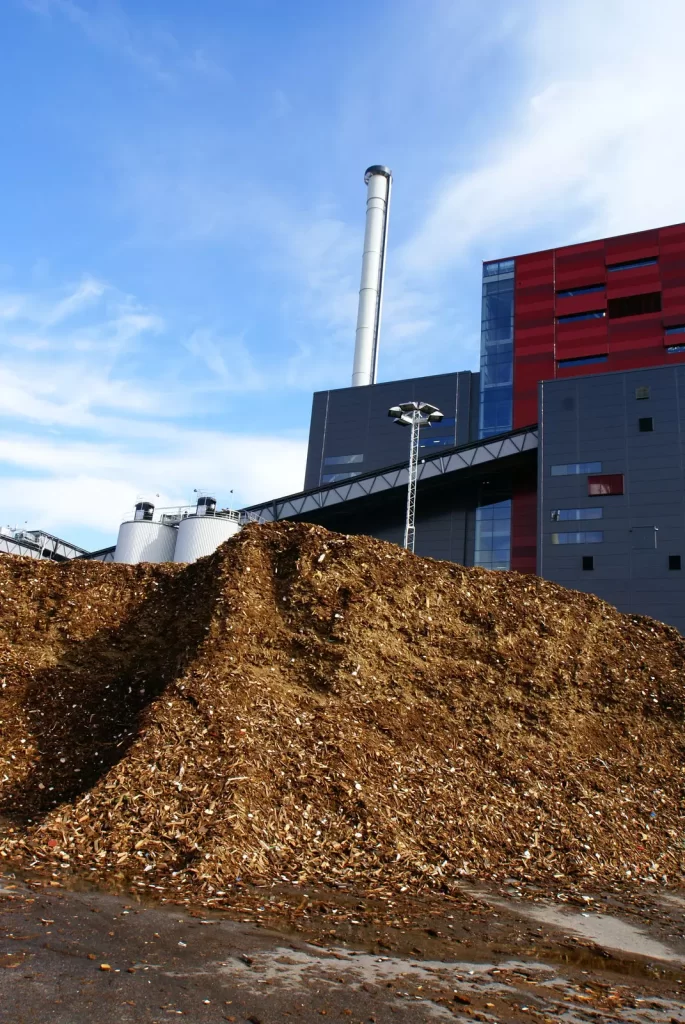
Deforestation happens when trees are stripped away or burned away. It can be human-caused or the result of a natural disaster.
Sometimes humans and nature work together to create deforestation. Examples include when a hydroelectric dam bursts due to catastrophic rainfall, or a volcano like Mt. Saint Helens flattens a forest.
Human-caused deforestation is two-fold. Sometimes managed forests owned by timber companies are stripped and then replanted. This happens for lumber and to create biomass for power plants.
While habitat loss and environmental degradation are heartbreaking, the trees will regrow within a few decades. However, the animals and birds must shift from place to place to survive.
On the other hand, forest fires caused by human activity will deforest an area that may not ever recover. Habitat loss is sometimes permanent.
Deforestation Solutions
The most obvious solution to deforestation is to replant trees in areas that are logged or burned for any reason. Replanting with native species is a must.
The second solution to deforestation is to decrease the demand for paper products and lumber. Choose things that are reusable as much as possible.
The alternative to lumber is steel which creates a different problem because it requires mining and uses non-renewable resources.
However, steel can be recycled forever. One of the benefits of recycling steel is that the recycled steel is just as strong and pure as virgin steel.
So while the recycled steel industry can’t keep up with the need for new steel, as more steel is recycled for construction purposes we should see it gradually relieve some of the need for lumber.
10. Recycling Inefficiencies
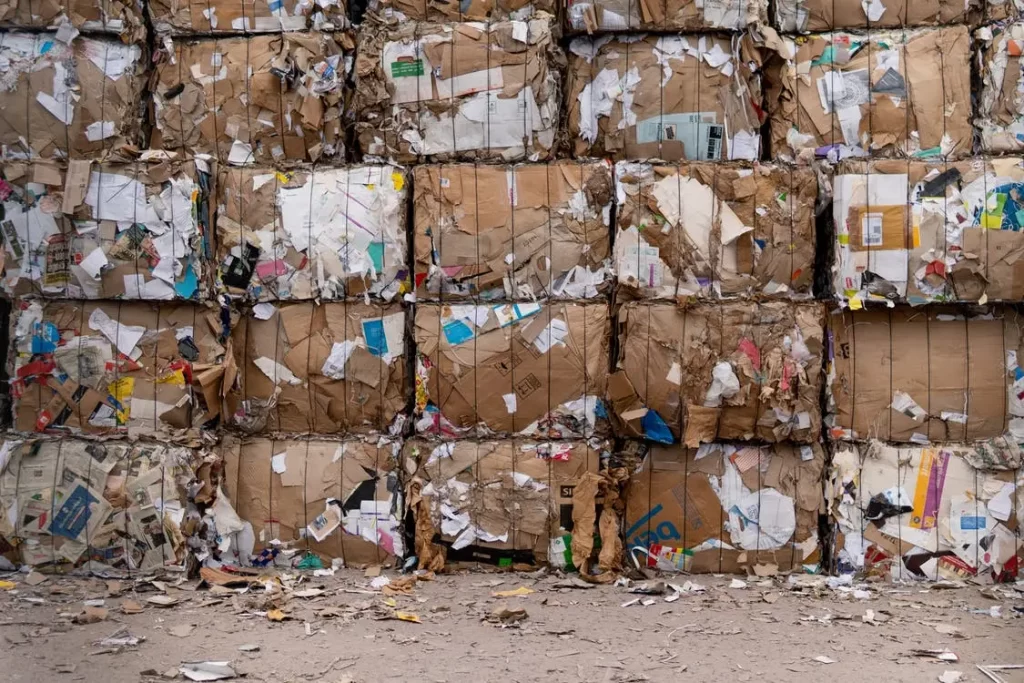
The final huge environmental problem that we must solve domestically is our recycling inefficiencies.
Most Americans don’t realize that our recycling system is strained and largely broken because we don’t recycle our trash at home.
The story of US recycling is a long one that’s full of problems, even from the beginning. China used to handle the bulk of our recycling, but it is so polluted that they banned it in 2018.
Now America’s recycling waste is shipped to developing countries like Cambodia, Bangladesh, and Ethiopia where it is piled waiting to be sorted and recycled into usable materials.
The problem is that anywhere from 20 to 70% of our recyclables end up in a landfill overseas or are burned. This is an outrage that has sparked a lot of discussions but it needs to be addressed at home.
Here are the reasons our recycling is not being recycled.
- People are putting contaminated items into recycling bins. Dirty recyclables can cause an entire load of recyclables – several tons – to be dumped in a landfill.
- People include non-recyclables in recycling bins. This wishful recycling is a major cause for discarding entire loads of recyclables. It’s too expensive to go through and sort it all back out, so it all gets put in the dump.
- The United States isn’t processing recyclables. The United States doesn’t have a federal recycling program and has been dependent on other countries to handle our waste. Now they don’t want it, so we’re stuck with it. We have to implement a recycling program and do it ourselves to succeed.
- Recycling is expensive. Cities used to sell their recycling as a type of raw material and make money from it. Now that global market has dried up and cities are having to pay to get rid of recyclables. That means tons of it are going into the landfill instead of being recycled.
- There are too many types of plastic. Plastic is a particular problem because there are so many types and not all are recyclable. Even though there is a number and a recycling symbol on the bottom doesn’t mean it’s accepted for recycling.
All of this is discouraging because those of us who recycle carefully realize that in spite of us our clean, sorted recyclables might still be ending in a landfill.
Recycling Solutions
The keys to our recycling disaster are expensive, and we have to play the long game to win.
- Education. Educate the public about what’s happening to recyclables and why. When people understand why they can’t throw grocery bags or plastic wrap in with clean water bottles they’ll stop doing it.
- Federal Investment. The federal government needs to invest in recycling centers that can turn US recyclable waste into clean, usable materials. It’s an expensive solution but the only one that can turn the situation around long-term.
- Business Investment. One of the major recycling benefits is that businesses can create packaging and goods with recycled materials. This will help to create a circular market for recyclables in the US economy.
- Reduction. The US must turn away from consumerism and focus on sustainability. As long as we buy into the consumerist culture of getting as much as possible, the waste problem will continue to grow.
We can help at home by ensuring that our recyclables are clean and generating less of a need for recycling by decreasing our dependence on single-use items.
It would also be helpful to limit plastic production to only types that are safe to use and can be recycled.
The benefits of recycling clothes and textiles can’t be overstated. Engaging in this circular economy saves money, eliminates fabric waste, and turns fabric into a renewable resource!
Causes of Environmental Problems
The causes of environmental problems usually come back to excess consumption. As the human population expands we are also collectively demanding more resources per person.
Humans want to use more energy, more precious metals, more water, more food, and more luxurious items like fashionable clothing and multiple vehicles.
All of these demands can be met, but only by expending more of the earth’s natural resources. Metals and fossil fuels are non-renewable so as demand increases the price goes up and the supply goes down.
The key to so many of our major environmental problems is to decrease personal consumption.
Why are environmental problems common in developing countries?
Good question and the answer comes back to excess consumption. Many developing countries receive our excess clothing, recyclables, and used goods.
They develop a market around these used goods, but there is simply too much. It ends up in massive waste piles because many of the goods we discard are low-quality and non-recyclable.
Developing countries lack the infrastructure to deal with polluted water, overflowing landfills, and piles of unused recyclables so they stay in the environment creating health and environmental hazards.
One example is electronics recycling. While we all want to reap the benefits of recycling electronics, when they’re sent overseas for recycling the results are dangerous.
“Informal” recyclers are exposed to extremely high levels of neurotoxins and carcinogens as they break down e-waste by hand to recover gold, silver, copper, and other precious metals.
Instead of exposing the poor to these hazardous materials we should be doing the recycling at home and helping to develop a clean recycling industry abroad.
Final Thoughts
We’ve discussed 10 global environmental problems, and most of them center around the demands of the economically developed world.
The problems we face on planet earth can seem overwhelming, but they aren’t. We can solve them beginning with our own buying and consumption habits.
We can become involved in clean-up efforts in our own communities. We can lobby for domestic recycling plants.
We can help educate our own community members about why recycling is important and why it’s vital to do it right.
What do you think about these environmental problems and solutions? Do you have more ideas for how we can help to solve these environmental problems? Let us know in the comments below!
